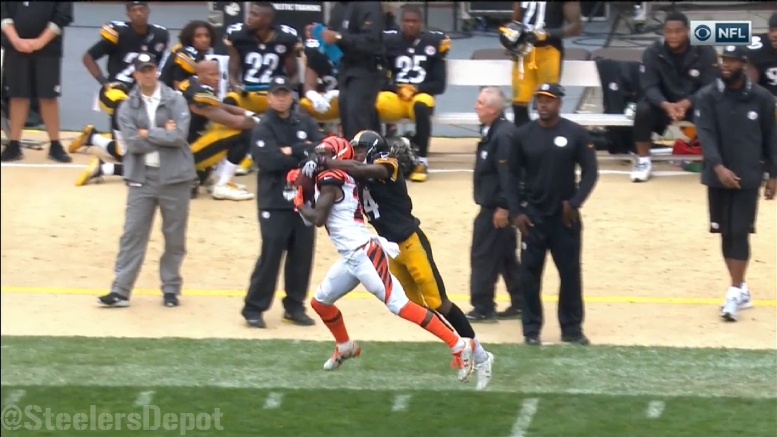There have been perhaps few topics more widely discussed regarding the Pittsburgh Steelers this offseason than the current state of third-year wide receiver Sammie Coates and what sort of role he might find for himself if he even manages to make the 53-man roster in 2017 following the team’s additions to the room in the past two months.
It is well-trodden territory by now, but to recap his sophomore season, Coates was thrust into the starting lineup to start the year, was highly productive, particularly as a deep target, in the first five games, and then struggled immensely in his sparse playing time for the rest of the season after fracturing two fingers in that fifth game.
One facet of the story that really doesn’t get its due justice is the fact that a massive proportion of Coates’ targets, particularly following his injury, came on rather low-percentage downfield throws, so one might anticipate a correlation with a lower catch percentage.
In my season-ending offensive charting notes for the regular season, I noted that Coates was targeted 51 times, and his targets averaged 21.9 yards in the air. That was even more than the 20.8 air yards that Darrius Heyward-Bey saw on his 21 targets, and the latter was almost exclusively used on nine routes.
In case you were wondering, yes, that trend did continue in the playoffs. Though he only saw five targets in the postseason, those five targets came at an average of 22.8 yards down the field from the line of scrimmage.
Bonus points are awarded for a Pro Football Focus reference these days, so I feel obligated to include one. According to a graphic that they recently posted on Twitter, Coates saw the deepest average depth of target out of everybody in the league—and it really wasn’t even close. Like, by three and a half yards not close, which is pretty insane. About 15 percent deeper per target than the next-closest.
Free agent WR Michael Floyd has been linked to several teams lately (Vikings, Redskins).
Mainly used as a deep threat so far in his career. pic.twitter.com/tYNGPGlS1K
— Pro Football Focus (@PFF) May 5, 2017
I marked Coates down for five dropped passes during the regular season. Three of them actually came on short passes, two of which were in the came in which he injured his hand. The other two were on deep targets. He dropped three passes in the AFC Championship game, all of which were on deep passes.
So here’s how it breaks down relative to the injury splits. He faced 31 targets according to our charting in the first five games. 14 of his targets were passes of at least 20 yards through the air, or about 45 percent of his passes. He caught seven of them and dropped two of them, with the others uncatchable.
Following his injury, including the postseason, he faced 26 total targets. 16 of them traveled at least 20 yards in the air, or about 62 percent of his total targets. He caught one of them, dropping four (as noted, three of them coming in the AFC Championship game), with the rest being uncatchable, or at least not deemed a drop.
I hope this helps a bit to put Coates’ post-injury season into more context. The Steelers felt that the easiest ball for him to catch on a busted hand would be a deep ball, but they were low-percentage throws, and Ben Roethlisberger’s deep ball was not as sharp following his knee injury. But that will be a topic for another day.








